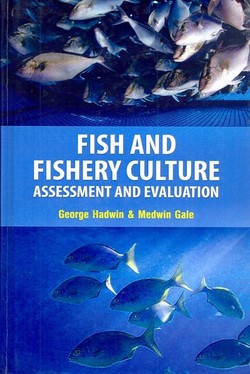
Fish and Fishery Culture Assessment and Evaluation
By
George Hadwin & Medwin Gale
Preface
Today cage culture is receiving more attention by both researchers and commercial producers. Factors such as increasing consumption of fish, declining stocks of wild fishes and poor farm economy has increased interest in fish production in cages. Many small or limited resource farmers are looking for alternatives to traditional agricultural corps. Agriculture appears to be a rapidly expanding industry and it offer opportunities even on a small scale. Cage culture also offers the farmer a chance to utilize existing water resources in which most cases have only limited use for other purposes.
Assessment of fishery products can both be performed as a discriminative test and as a descriptive test. The most used discriminative test in sensory analysis of fish is the triangle test, which indicates whether or not a detectable difference exists between two samples. The assessors receive three coded samples, are told that two of the samples are identical and one is different, and are asked to identify the odd sample.
The term aquaculture relates to the culture of aquatic organisms in fresh, brackish or sea water. Traditionally, fishes are netted from the sea or from rivers, lakes and ponds. This is called capture fishery. The catch from fresh water has increased almost by five times whereas marine production has increased only by three times. India has a vast coastline and large number of fresh water resources has tremendous potential tor aquaculture. About 2.6 million hectares or brackish water are available in addition to many perennial rivers lakes and ponds where aquaculture can be easily carried out.
Aquaculture does not require skilled labour and even women folk and children with basic training can undertake the work effectively. Aquaculture also promises employment potential of up to 9 lakh people. If to accelerate aquaculture development, immediate steps are required to be taken by the centre and state agencies, including adequate financing through banks or other organizations.
Aquaculture encompasses a very wide range of different aquatic farming practices with regard to species, environments and systems utilized, with very distinct resource use patterns involved, offering a wide range of options for diversification of avenues for enhanced food production and income generation in many rural and periurban areas. In view of the significant nutritional, social, economic and environmental benefits, which generally can be associated with most existing aquaculture practices, and the good prospects for further development and expansion of the sector, it is important for efforts aiming at the sustainable development of aquaculture that potential social conflicts and environmental problems are minimized.
Aquaculture is currently one of the fastest growing food production systems in the world. Most of global aquaculture output is produced in developing countries and significantly in low-income food- deficit countries. With stagnating yields from many capture fisheries and increasing demand for fish and fishery products, expectations for aquaculture to increase its contribution to the world’s production of aquatic food are very high, and there is also hope that aquaculture will continue to strengthen its role in contributing to food security and poverty alleviation in many developing countries.
Contents
1 – Introduction
2 – Fish Culture
3 – Assessment of Fish Establishments
4 – Fisheries and Aquaculture
5 – Technical Aspects of Fish Culture
6 – Sensory Evaluation of Raw Fish in Markets
7 – Fish Quality and products Assessment



ساحة النقاش